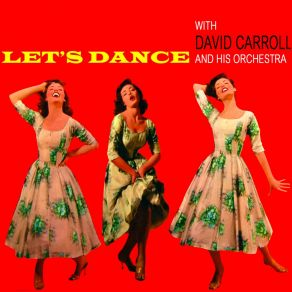Let's Dance
Download links and information about Let's Dance by David Carroll. This album was released in 1959 and it belongs to Pop, Lounge genres. It contains 12 tracks with total duration of 27:35 minutes.

|
|
|---|---|
| Artist: | David Carroll |
| Release date: | 1959 |
| Genre: | Pop, Lounge |
| Tracks: | 12 |
| Duration: | 27:35 |
| Buy it NOW at: | |
| Buy on iTunes $9.99 | |
| Buy on Amazon $3.00 | |
| Buy on Songswave €0.78 | |
Tracks
[Edit]| No. | Title | Length |
|---|---|---|
| 1. | Let's Dance | 1:45 |
| 2. | Cuddle Up a Little Closer | 2:02 |
| 3. | Yearning | 2:04 |
| 4. | A Gliss to Remember | 2:17 |
| 5. | The Glow Worm | 2:50 |
| 6. | The Trouble With Harry | 2:14 |
| 7. | My Sin | 2:07 |
| 8. | Dancing Tambourine | 2:22 |
| 9. | Euphrates | 2:21 |
| 10. | Puerto Rican Pedlar | 2:16 |
| 11. | Armen's Theme | 2:13 |
| 12. | Dixie Dawn Patrol | 3:04 |
Details
[Edit]Although Rodell Schreir is probably not a household name, easy listening connoisseurs may recognize his pseudonym: David Carroll. He played an integral role as Artists and Repertoire (A&R) director of Mercury Records during the '50s and '60s and his notable credits include producer of the Diamonds, the Platters, Vic Damone, Sarah Vaughan and the Smothers Brothers' best-selling comedy LPs. Additionally, he was the leader of an orchestra that cut in excess of two-dozen LPs, that are decidedly tame by 21st century standards. That said, his Let's Dance (1958) and its follow-up Let's Dance Again (1959) were considered revolutionary at the time as an early full-stereo recording. While Carroll's scores of popular tunes are comparable to that of Enoch Light, they lack Light's overt novelty. Rather than focusing primarily on percussion, Carroll incorporates the full ensemble. The style is typical of the 'space age bachelor pad' sound of the era, yet there are a few numbers that stand out from the rest. The Old West-flavored "Armen's Theme" was penned by Chipmunks originator Ross Bagdasarian and retains the jaunty feel evident in "The Chipmunks Song (Christmas Don't Be Late)" and "Alvin's Harmonica." "A Gliss to Remember" is an interesting find as one of the cuts to feature Elmo Tanner (whistling). Tanner's contributions as a soloist can be heard on the earliest of two versions of Let's Dance issued circa 1957/1958. The second edition was significantly different on the six selections prominently including Tanner, as they had been either re-recorded or remixed, ultimately resulting in his removal. That anomaly aside, the album peaked at an impressive number 21 and set the stage for the even more successful Let's Dance Again.